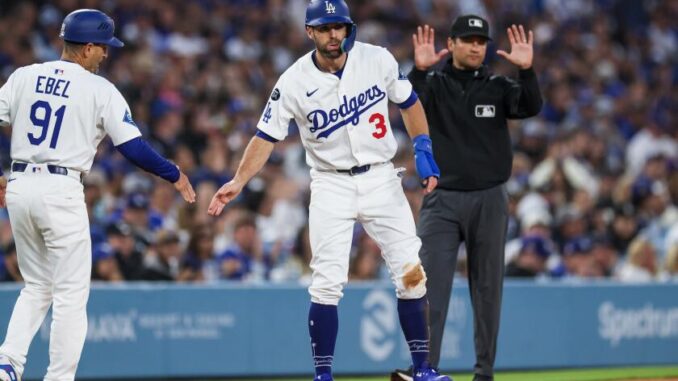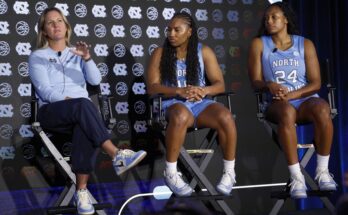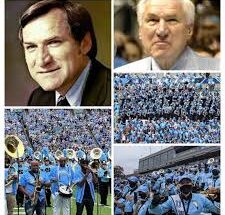Chris Taylor’s struggles have become a glaring issue for a Los Angeles Dodgers team loaded with expectations but still searching for complete consistency in their lineup. Once a vital cog in their postseason machine and a Swiss Army knife on defense, Taylor now finds himself on the fringes of productivity, and the Dodgers are beginning to feel the pressure of roster decisions that could be on the horizon. As Taylor’s bat remains ice-cold, the club is being forced to evaluate the viability of carrying an underperforming veteran in a lineup that already faces its share of questions amid injuries and evolving roles.
Taylor, now in his ninth season with the Dodgers, is hitting well below the Mendoza Line and has been largely ineffective in limited plate appearances. He’s striking out at an alarming rate, often appearing overmatched even against average pitching. While the organization has long valued his defensive versatility—capable of playing nearly every position on the field—there’s only so much slack a contender can offer when production is nonexistent at the plate. His struggles are particularly magnified in a lineup that, while top-heavy with stars like Mookie Betts, Shohei Ohtani, and Freddie Freeman, has at times lacked consistent contributions from the bottom half. Taylor’s offensive collapse, if it continues, could make him the odd man out when it comes to difficult decisions the front office may soon be forced to make.
His woes couldn’t come at a worse time for a team navigating a slate of injuries and a grueling schedule. With multiple pitchers on the injured list, including high-profile arms like Walker Buehler and Dustin May, the Dodgers have had to shuffle the deck not just on the mound but throughout the roster. Roster flexibility becomes paramount in times like these, but flexibility only works if the moving parts are producing. For Taylor, his failure to provide any meaningful output is reducing the team’s margin for error, forcing manager Dave Roberts and the front office to weigh loyalty against results.
The reality is that Taylor isn’t just in a slump—this is part of a larger trend that began last season. After a career-high strikeout rate in 2023 and a batting average hovering in the .220 range, there were signs that Taylor’s offensive skills were deteriorating. What’s most concerning now is not just the lack of hits but the absence of competitive at-bats. His whiff rate is up, his timing appears off, and even in favorable counts, he’s failing to do damage. When players lose their swing mechanics and confidence simultaneously, it becomes extremely difficult to remain on a major league roster—especially for a team like the Dodgers that is built to win now.
As Taylor continues to search for answers, the front office is quietly preparing for possible roster moves. The emergence of young talent, such as Miguel Vargas and Andy Pages, is creating internal pressure. Both have shown flashes of offensive promise and, more importantly, represent cost-effective and potentially longer-term solutions. Pages, in particular, has made an impression with his mature approach at the plate and ability to drive the ball to all fields. If the Dodgers feel he’s ready for a full-time role, someone will have to make room—and right now, all eyes are on Taylor.
The Dodgers are also navigating a situation with their catchers that, in contrast to Taylor’s situation, is an unexpected bright spot. Will Smith has long been a cornerstone of the lineup, one of the more underrated offensive catchers in baseball. But this season, the production from backup catcher Austin Barnes has taken a surprising turn. After years of being known almost exclusively for his work behind the plate and his chemistry with the pitching staff, Barnes is showing life with the bat that hasn’t been seen in quite some time.
For a team that hasn’t always gotten production from the backup catcher spot, Barnes’ offensive awakening—even if it proves to be temporary—is an added bonus. He’s driving the ball with more authority, spraying hits to both gaps, and looking like a player with renewed confidence. The offensive contributions from Barnes add length to the lineup and offer breathing room when Roberts wants to give Smith a day off without sacrificing offensive punch. This type of depth is critical during the long season, especially as the Dodgers deal with injuries elsewhere.
Smith, for his part, continues to play at an All-Star level. He’s hitting for average, driving in runs, and showing the kind of consistent approach that has made him a steady presence in the middle of the order. His ability to manage the staff while contributing offensively makes him one of the most valuable players on the team. With Smith playing well and Barnes contributing more than expected, the catching tandem has quietly become one of the more productive duos in baseball—something that could become a significant advantage down the stretch.
This dynamic at catcher only underscores how problematic Taylor’s position has become. The Dodgers can handle carrying a defensive-minded player when other parts of the lineup are producing. But if even the backup catcher is giving more offensive production than Taylor, it raises questions about how long he can remain on the roster. While his leadership and clubhouse presence are important, the team’s goals for 2025 leave little room for sentimentality. The front office has not been afraid to make bold decisions in the past, and if Taylor cannot turn things around soon, it wouldn’t be a surprise to see the Dodgers explore a DFA or trade scenario to open a roster spot.
Adding to the urgency is the potential return of injured players who will soon require spots. Jason Heyward is expected back soon, and while his bat isn’t a lock for consistent production either, his defensive acumen and leadership provide value that’s arguably greater than Taylor’s current contributions. As players begin to return, decisions will have to be made. The Dodgers can only carry so many utility options, and if Vargas and Pages keep developing, Taylor’s path to playing time could narrow even further.



